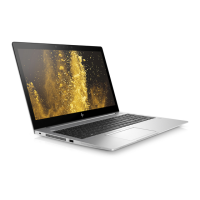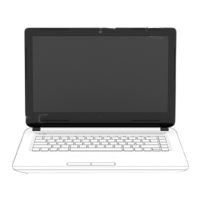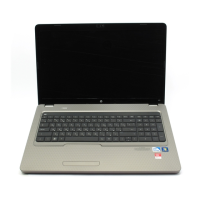The computer screen is blank.
If you have not turned off the computer but the screen is blank, one or more of the following may be the
cause:
●
The computer may be in standby or hibernation.
●
The computer may not be set to display the image on the computer screen.
●
The display switch or the ambient light sensor (select models only) may not be functioning properly.
The suggestions below may help you determine the reason the computer screen is blank.
●
To resume from standby or restore from hibernation, briefly press the power button.
Standby and hibernation are energy-saving features that can turn off the display. Standby and
hibernation can be initiated by the system while the computer is in Microsoft® Windows® but is not
in use, or when the computer has reached a low-battery condition. To change these and other
power settings, select Start > Control Panel > Performance and Maintenance > Power Options.
●
To transfer the image to the computer screen, press fn+f4.
On most models, when an optional external display device, such as a monitor, is connected to the
computer, the image can be displayed on the computer screen or the external display, or on both
devices simultaneously. When you press fn+f4 repeatedly, the image alternates among the
computer display, one or more external display devices, and simultaneously displays on all devices.
●
If the computer has an external display switch, press it to confirm that it moves freely. (The display
switch is normally located on the upper-left corner of the keyboard.) If the computer has a magnetic
display switch, be sure that the computer is not near a strong magnetic field and that no magnetized
items (for example, a magnetized screw driver) are laying on the computer.
●
If the computer has an ambient light sensor (select models only), make sure that the sensor is not
obstructed.
The ambient light sensor is normally located on the lower-left corner of the display.
ENWW The computer screen is blank. 3

